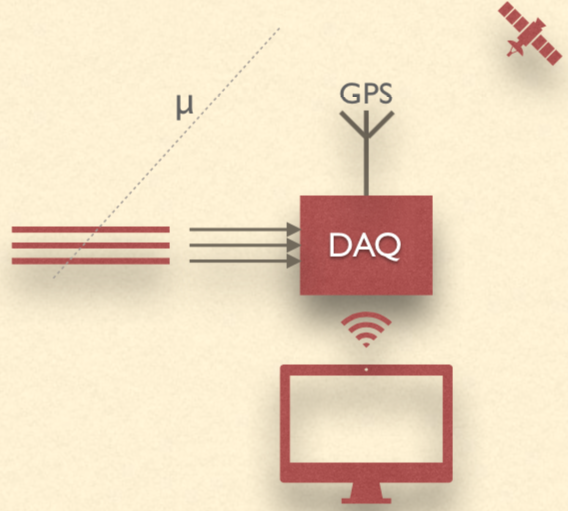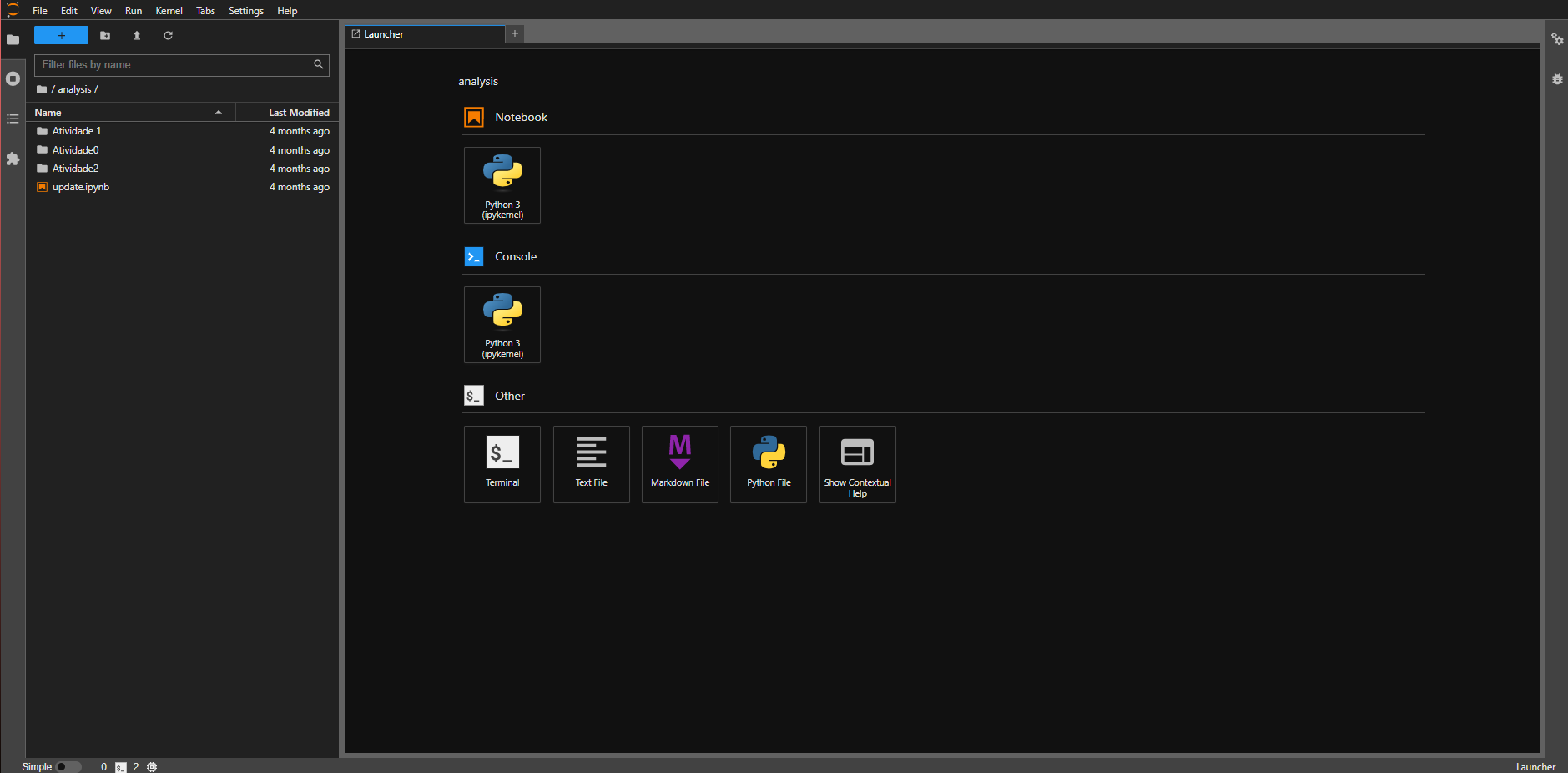Detecting muons
The detection of a particle like a muon can be understood as a test of its fundamental properties. A particle does not become evident until it interacts measurably with the material of the experimental apparatus or until it decays into other detectable particles.
In our Cosmic experiment, when muons pass through a material called a scintillator, particles of light (photons) are produced and transformed into electrical signals through one or more SiPM detectors (acronym in English for silicon photomultiplier). The signal sent by SiPMs is proportional to the sum of all detected photons.
Experimental montage
Each Cosmic station, schematically represented in Figure 15, is composed of:
- SiPMs silicon photosensors (individual SiPM: mm mm ) that operate at low voltage;
- mm mm mm plastic scintillator plates;
- front-end electronics: responsible for analog processing of the SiPMs signal (amplification, formatting, and discrimination) and for providing the low voltage for SiPMs operation;
- GPS modules that allow sending the geographic coordinates of each station and synchronizing the measurement time between geographically dispersed stations;
- Wi-Fi communication network

Figure 15: Schematic view of a "Cosmic" station.
Data and software for analysis
The data is stored in shared systems on the internet ("cloud systems") and analyzed via Jupyter – a programming environment that can be hosted remotely on a server. This environment has access to the database that stores the information collected by measurement stations in schools. To learn a little more about JupiterLab click here (in English).
Users can access interactive analysis activities placed in "virtual exercise books" (notebooks) when entering the analysis environment. Notebooks are interesting because they integrate, on the same screen, instructions for carrying out activities and exercises.

The Jupyter screen in your internet browser.
Information saved in the database includes:
- which sensors detected a signal in that event;
- station position;
- signal width;
- Number of detected events;
- extra GPS information.
Now it's up to you!
In the top bar 'Activities' you will find several proposals to explore the data, analyze it, and draw your conclusions about our Cosmic. muons' detection.
Have a good job!